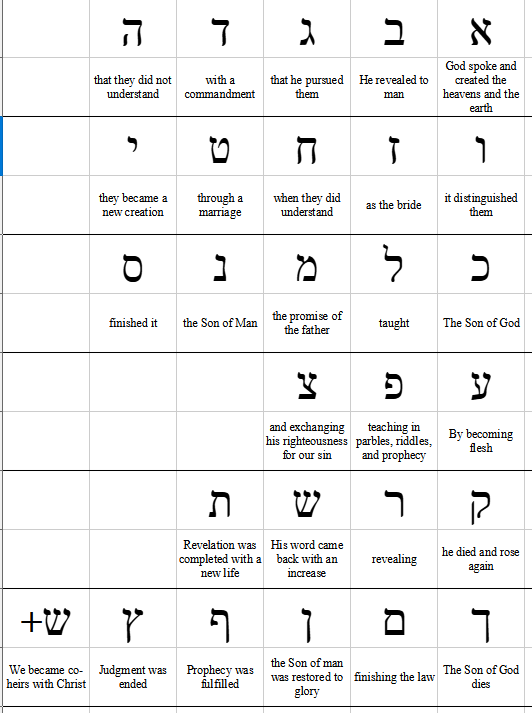Hebrew alphabet: Difference between revisions
No edit summary |
No edit summary |
||
| (4 intermediate revisions by the same user not shown) | |||
| Line 1: | Line 1: | ||
{{bl| Hebrew alphabet }} | {{bl| Hebrew alphabet }} | ||
=== '''The Design of the Hebrew Language: Spirit to Flesh''' === | |||
Hebrew is unique among languages—not only in structure but in '''symbolic meaning'''. Unlike most languages that move left to right, Hebrew flows '''right to left'''—a motion that reflects '''Spirit moving toward flesh''', divine revelation descending into human understanding. | |||
The letters are | The '''symbolic depth''' of Hebrew is not just found in its letters, but in '''the strokes, dots, corners, and position''' of each character. Every detail is intentional, forming a system that '''carries meaning beyond phonetics, revealing layers of divine truth'''. | ||
: | While traditionally recognized as having '''22 consonantal letters''', Hebrew in its full expression contains '''28'''—including the '''final forms (sofit)''', which signal '''completion and transition'''. These variations are not random but are '''part of the structure of revelation itself'''. | ||
Hebrew vowels function differently than in most languages. There are '''five written vowels: אהויע''', but vowels are also '''inherent and invisible'''. Since '''consonants interrupt breath''', '''each consonant is followed by an unseen vowel''', mirroring '''how God's Spirit (breath) flows, yet is shaped by the Word'''. | |||
To engage with Hebrew is to go beyond reading—it is to '''see the architecture of revelation''', where even the smallest mark is part of '''God’s designed communication''' with humanity. | |||
[[ File:Heb_Alphabet.png ]] | |||
The final four legged shin does not have a character in the font since it is not used to form any word. I use +ש to represent it. | |||
Latest revision as of 15:50, 27 March 2025
The Design of the Hebrew Language: Spirit to Flesh
Hebrew is unique among languages—not only in structure but in symbolic meaning. Unlike most languages that move left to right, Hebrew flows right to left—a motion that reflects Spirit moving toward flesh, divine revelation descending into human understanding.
The symbolic depth of Hebrew is not just found in its letters, but in the strokes, dots, corners, and position of each character. Every detail is intentional, forming a system that carries meaning beyond phonetics, revealing layers of divine truth.
While traditionally recognized as having 22 consonantal letters, Hebrew in its full expression contains 28—including the final forms (sofit), which signal completion and transition. These variations are not random but are part of the structure of revelation itself.
Hebrew vowels function differently than in most languages. There are five written vowels: אהויע, but vowels are also inherent and invisible. Since consonants interrupt breath, each consonant is followed by an unseen vowel, mirroring how God's Spirit (breath) flows, yet is shaped by the Word.
To engage with Hebrew is to go beyond reading—it is to see the architecture of revelation, where even the smallest mark is part of God’s designed communication with humanity.
The final four legged shin does not have a character in the font since it is not used to form any word. I use +ש to represent it.
